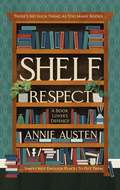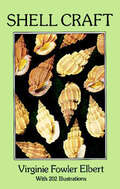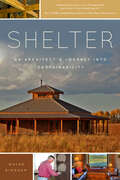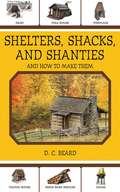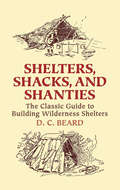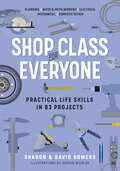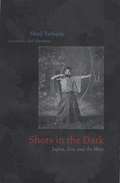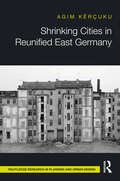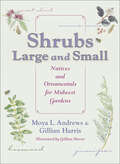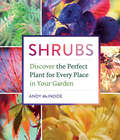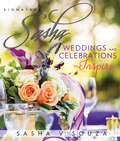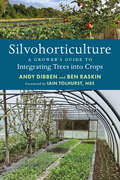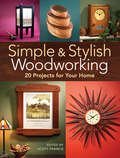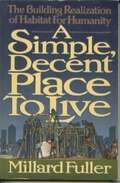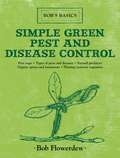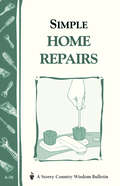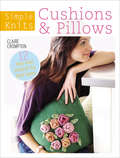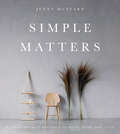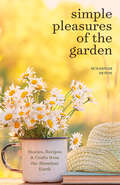- Table View
- List View
Shelf Respect: A Book Lovers' Guide to Curating Book Shelves at Home
by Annie AustenDecluttering is all the rage, but what do you do when your preferred style of interior decor is miles of overstuffed bookshelves? If you can't bring yourself to KonMari your collection, SHELF RESPECT will validate your life choices.The perfect gift for the book lover in your life: a celebration of the humble but oh-so-wonderful bookshelf. Do you alphabetise your books or organise by genre... or (heaven forbid) colour? Have you merged your collection with your other half's? (And do you write your name inside the cover, just in case?) Do you keep all the books you've read, or only the most cherished? (Is there such a thing as too many books?) Are you a Billy aficionado, or are we talking library ladders and bespoke Oak shelves? Bound to provoke (good-natured) debate between Bibliophiles, SHELF RESPECT is a charmingly illustrated book in defence of towering TBR piles and overflowing shelves... no matter how you choose to organise them.And whilst you #StayHome, don't miss these other great titles from Sphere Books: ** Distract Yourself: 101 Positive Things to Do and Learn Whilst You Stay Home ** ** The Bumper Book of Would You Rather? Over 350 hilarious hypothetical questions for ages 6 to 106 **** Home Sweet Home: The Little Book of Natural Cleaning **** AA British Road Map Puzzle Book: Addictive map-based brain-games for anyone in lockdown **
Shelf Respect: A Book Lovers' Guide to Curating Book Shelves at Home
by Annie AustenDecluttering is all the rage, but what do you do when your preferred style of interior decor is miles of overstuffed bookshelves? If you can't bring yourself to KonMari your collection, SHELF RESPECT will validate your life choices.The perfect gift for the book lover in your life: a celebration of the humble but oh-so-wonderful bookshelf. Do you alphabetise your books or organise by genre... or (heaven forbid) colour? Have you merged your collection with your other half's? (And do you write your name inside the cover, just in case?) Do you keep all the books you've read, or only the most cherished? (Is there such a thing as too many books?) Are you a Billy aficionado, or are we talking library ladders and bespoke Oak shelves? Bound to provoke (good-natured) debate between Bibliophiles, SHELF RESPECT is a charmingly illustrated book in defence of towering TBR piles and overflowing shelves... no matter how you choose to organise them.And whilst you #StayHome, don't miss these other great titles from Sphere Books: ** Distract Yourself: 101 Positive Things to Do and Learn Whilst You Stay Home **** The Bumper Book of Would You Rather? Over 350 hilarious hypothetical questions for ages 6 to 106 **** Home Sweet Home: The Little Book of Natural Cleaning **** AA British Road Map Puzzle Book: Addictive map-based brain-games for anyone in lockdown **
Shelfie: Clutter-clearing ideas for stylish shelf art
by Martha RobertsA decorating trend and social media phenomenon, 'the shelfie' originally emerged in response to the clutter-clearing movement. What started as a label for beautiful bookshelves is now applied to artfully stylish arrangements of collectables, flowers, photos, crafting ephemera, perfume bottles - and of course books. And shelfies don't just appear on shelves, but also on desks, worktops and fireplaces.De-cluttering, and then curating our favourite possessions stylishly, is a great way to bring personality into the home and workspace. In the first book on the shelfie, Martha Roberts shows you how to source, sort and arrange your belongings for every room in the house. Photography by Nick Pope, who took the photographs for At Home with Plants, also published by Mitchell Beazley.'While most of us are just beginning to get to grips with the selfie, the 'shelfie' movement has been gaining digital ground. The self-obsessed are becoming the 'shelf-obsessed.' - Talib Choudry, the Telegraph
Shell Craft
by Virginie Fowler ElbertSince ancient times, seashells have provided both materials and design inspiration for a variety of arts and crafts. Shell-inspired motifs have turned up in pottery and floor mosaics, as architectural ornaments, and on furniture. The magnificent mollusks have also been used as money and decorative objects to adorn the body. This comprehensive guide by Virginie Fowler Elbert -- noted author, crafter, and authority on shell lore -- offers a wealth of craft ideas for using these lovely treasures from the sea.Following a fascinating introduction to the use of shells throughout history, the simply written text provides step-by-step instructions for cleaning, preparing, and displaying shells; suggests methods for decorating boxes and mirror frames; and shows how to create fanciful soap dishes, night lights, and jewelry items -- from pendants and necklaces to bracelets, cuff links, and earrings.You'll also find easy-to-follow directions for preserving shells in resin to make paperweights, napkin holders, cachepots, and other household accessories, as well as instructions for casting shell forms from molds (an ideal way to develop multiple patterns if only a few shells are available). There's even a chapter on how to do shell printing with linoleum blocks and crayon prints to create distinctive designs for placemats, wall hangings, wrapping paper, and stationery. Reference works and an updated list of supply sources round out this profusely illustrated guide to a fun-filled and rewarding pastime.
Shelter: An Architect's Journey into Sustainability
by Wayne BinghamAfter practicing conventional glass, steel, and concrete architecture for more than thirty years, an award-winning architect discovers the concept of sustainable living and embarks on a journey that ends with his own strawbale home at the foot of the Grand Tetons. A complete source of information for sustainable and off-the-grid construction, Shelter explores the principles of sustainable living and then illustrates actual execution of those principles in the author's strawbale home. Both an exploration of sustainability from an architect's point of view as well as a practical reference for home builders, Shelter is an indispensable resource to those interested in leaving a smaller foot print on the environment. Follow the author from the beginning idea through the planning, designing, and constructing to the realities of living in his strawbale dream home.
Shelters, Shacks, and Shanties: And How to Make Them (Lyons Press Ser.)
by Daniel Carter BeardNineteenth-century building advice that is eminently practical in the twenty-first century. 330 b/w illustrations
Shelters, Shacks, and Shanties: The Classic Guide to Building Wilderness Shelters
by D. C. BeardThis excellent hands-on guide by one of the founders of the Boy Scouts of America contains a wealth of practical instruction and advice on how to build everything from a bark teepee and a tree-top house to a log cabin and a sod house. No professional architects are needed here; and knowing how to use an axe is more important than possessing carpentry skills. More than 300 of the author's own illustrations and a clear, easy-to-follow text enable campers to create such lodgings as half-cave shelters, beaver mat huts, birch bark shacks, over-water camps, a Navajo hogan, and a pole house. <p><p> Additional chapters provide information on how to use an axe, split and notch logs, make a fireplace, and even build appropriate gateways to log houses, game preserves, ranches, and other open areas. An invaluable book for scouts, campers, hikers, and hunters of all ages, this guide and its fascinating collection of outdoor lore "still has intrinsic value," said Whole Earth Magazine, and will be of keen interest to any modern homesteader.
Sheridan Nurseries: One Hundred Years of People, Plans, and Plants
by Edward Butts Karl StenssonA charming tale of history, creativity, natural inspiration, and a love of gardening. In 1913, Howard Dunington-Grubb and his wife, Lorrie, bought a small plot of land near Sheridan, Ontario, for the cultivation of ornamental plants. Local farmers thought they were crazy. But Howard and Lorrie, landscape architects recently arrived from England, were visionaries who dreamed of creating magnificent gardens in the colonial wasteland. Realizing that Canada had no nurseries that produced the plants they needed, they started one of their own. To manage it they hired Herman Stensson, an expert nurseryman whose references included one from the crown prince of Denmark.The chronicles of the Dunington-Grubbs and the Stensson family form the basis for the incredible history of Sheridan Nurseries, enhanced by the diverse backgrounds and experiences of the many people who helped turn a dream into success. This Canadian saga reaches from the monuments of Toronto’s University Avenue and Niagara’s Oakes Garden Theatre to hundreds of parks and estates, and perhaps even your own backyard.
Shop Class for Everyone: Plumbing · Wood & Metalwork · Electrical · Mechanical · Domestic Repair
by David Bowers Sharon BowersDid you remember your goggles?There used to be a time when pretty much every high school offered Shop class, where students learned to use a circular saw or rewire a busted lamp- all while discovering the satisfaction of being self-reliant and doing it yourself. Shop Class for Everyone now offers anyone who might have missed this vital class a crash course in these practical life skills. Packed with illustrated step by step instructions, plus relevant charts, lists, and handy graphics, here&’s how to plaster a wall, build a bookcase from scratch, unclog a drain, and change a flat tire (on your car or bike). It&’s all made clear in plain, nontechnical language for any level of DIYer, and it comes with a guarantee: No matter how simple the task, doing it with your own two hands provides a feeling of accomplishment that no app or device will ever give you.
Shop Tools
by Deere CompanyTools don't make the service technician - but they help. Knowing how to use and care for them will put you a step ahead of the crowd. In this book, we'll cover the following tools: Screwdrivers, Hammers, Pliers, Wrenches, Chisels, Punches, Files, Hacksaws, Vises, Clamps, Twist Drills, Taps and Dies, Screw Extractors, Pullers, Pick-Up Tools, Inspection Mirrors, Tubing Cutters, Soldering Equipment, Feeler Gauges, Micrometers, Dial Indicators, Spring Testers, Pressure Gauges, Speed-Measuring Tools
Shots in the Dark: Japan, Zen, and the West
by Shoji Yamada Earl Hartman S. YamadaIn the years after World War II, Westerners and Japanese alike elevated Zen to the quintessence of spirituality in Japan. Pursuing the sources of Zen as a Japanese ideal, Shoji Yamada uncovers the surprising role of two cultural touchstones: Eugen Herrigel's Zen in the Art of Archery and the Ryoanji dry-landscape rock garden. Yamada shows how both became facile conduits for exporting and importing Japanese culture.
Shrinking Cities in Reunified East Germany
by Agim KërçukuThe book explores the relationship between the shrinking process and architecture and urban design practices. Starting from a journey in former East Germany, six different scenes are explored in which plans, projects, and policies have dealt with shrinkage since the 1990s. The book is a sequence of scenes that reveals the main characteristics, dynamics, narratives, reasons and ambiguities of the shrinking cities’ transformations in the face of a long transition. The first scene concerns the demolition and transformation of social mass housing in Leinefelde-Worbis. The second scene deals with the temporary appropriation of abandoned buildings in Halle-Neustadt. The third scene, observed in Leipzig, shows the results of green space projects in urban voids. The scene of the fourth situation observes the extraordinary efforts to renaturise a mining territory in the Lausitz region. The fifth scene takes us to Hoyerswerda, where emigration and ageing process required a reduction and demolition in housing stock and social infrastructures. The border city of Görlitz, the sixth and last scene, deals with the repopulation policies that aim to attract retirees from the West.
Shrubs Large and Small: Natives and Ornamentals for Midwest Gardens
by Gillian Harris Moya L. AndrewsA charming and colorful guide to the hardy, low-maintenance plants that serve as essential elements of the architecture of our gardens.This beautifully illustrated book on landscape gardening addresses shrubs and how to determine which you should plant among your perennials and where. Shrubs provide the foundation for a pleasing, yet low-maintenance garden. They are long-lived, have the ornamental appeal of perennials, and provide variety in color, size, shape, and texture, as well as shelter and berries for birds. Shrubs can make attractive arrangements indoors and provide seasonal variation through the entire year.In addition to the useful information for gardeners of any skill level, Shrubs Large and Small includes Gillian Harris’s irresistible illustrations—botanically correct works of art that will delight and inspire.
Shrubs: Discover the Perfect Plant for Every Place in Your Garden
by Andy McIndoeA Shrub for Every Situation Shrubs are the perfect plant—they are low-maintenance, there is a variety for nearly every need, and they are widely available at garden centers and nurseries. In his new book Shrubs, Andy McIndoe—one of the world’s foremost woody plant experts—offers the information and advice needed to pick the right shrub for every site and condition. Shrubs includes plant suggestions for challenging growing conditions and restricted planting spaces, along with shrubs chosen for their desirable characteristics, including hardiness in shade, difficult soil, and harsh conditions. Every plant profile includes complete growing information, color photographs, and recommended companion plants. With this helpful guide in hand, it’s easier than ever to decide which shrubs to add to your home garden.
Signature Sasha: Weddings and Celebrations to Inspire (Signature Sasha)
by Sasha V. SouzaAuthored by internationally recognized event designer Sasha Souza, Weddings & Celebrations to Inspire, is Souza’s much anticipated second event design book. Featuring images from many of Souza’s beautiful events, Weddings & Celebrations to Inspire offers event inspiration, practical advice, design ideas, design-your-own suggestions and directions, color palettes, real wedding and celebration images and descriptions, and other party tips for both the party throwing layman and event industry professionals. Weddings & Celebrations to Inspire provides helpful commentary and visual aid to help you design your next small to large, casual to formal, or simple to sophisticated celebration.
Silvohorticulture: A grower's guide to integrating trees into crops
by Andy Dibben Ben Raskin"Dibben and Raskin offer an insightful, inspiring but also exceptionally practical guide to integrating trees into annual cropping systems. . . in this book we see how the phrase 'the sky’s the limit' has never been more applicable."—Jesse Frost, author of The Living Soil Handbook An invaluable handbook for farmers, growers, and gardeners, Silvohorticulture is the first book to offer a detailed, practical guide on how to effectively integrate trees with vegetable growing, offering information previously known only in the foresting world. Drawing on the decades-long experiences of Ben Raskin and Andy Dibben, both of whom have designed and managed agroforestry systems and have extensive experience in commercial horticultural crop production, this is the definitive book on the interaction between trees and crops, covering the benefits of trees for edible crops and the potential for additional crops from trees, plus crucial new information on how to fit trees into complex crop rotations as well as manipulating access to light. Ben and Andy also reveal the latest research on how tree roots behave and, importantly, how that impacts your crops. Agroforestry can bring immense benefits to farmers and growers—not just optimizing yield, but also improving soil, managing pests and water, increasing biodiversity, and reducing costs. System design must be customised to each grower’s requirements, and Silvohorticulture offers step-by-step detail that will allow you to manage your trees and crops successfully. "In this immensely practical guide, the authors provide the technical details towards integrating trees with vegetables and other crops, all while dispelling any preconceived notions that this idea reduces productivity or function. In fact, these systems might prove essential for farm resilience in a changing climate."—Steve Gabriel, author of Silvopasture
Silvohorticulture: A grower's guide to integrating trees into crops
by Andy Dibben Ben Raskin"Dibben and Raskin offer an insightful, inspiring but also exceptionally practical guide to integrating trees into annual cropping systems. . . in this book we see how the phrase 'the sky&’s the limit' has never been more applicable."—Jesse Frost, author of The Living Soil HandbookAn invaluable handbook for farmers, growers, and gardeners, Silvohorticulture is the first book to offer a detailed, practical guide on how to effectively integrate trees with vegetable growing, offering information previously known only in the foresting world.Drawing on the decades-long experiences of Ben Raskin and Andy Dibben, both of whom have designed and managed agroforestry systems and have extensive experience in commercial horticultural crop production, this is the definitive book on the interaction between trees and crops, covering the benefits of trees for edible crops and the potential for additional crops from trees, plus crucial new information on how to fit trees into complex crop rotations as well as manipulating access to light. Ben and Andy also reveal the latest research on how tree roots behave and, importantly, how that impacts your crops.Agroforestry can bring immense benefits to farmers and growers—not just optimizing yield, but also improving soil, managing pests and water, increasing biodiversity, and reducing costs. System design must be customised to each grower&’s requirements, and Silvohorticulture offers step-by-step detail that will allow you to manage your trees and crops successfully."In this immensely practical guide, the authors provide the technical details towards integrating trees with vegetables and other crops, all while dispelling any preconceived notions that this idea reduces productivity or function. In fact, these systems might prove essential for farm resilience in a changing climate."—Steve Gabriel, author of Silvopasture
Simple Acts to Save Our Planet: 500 Ways to Make a Difference (Simple Acts Gift Series)
by Michelle NeffSimple Acts to Save Our Planet shows you how to be more active in saving our planet every day by performing some &“Simple Acts of Kindness&”—for the Earth.Treat the environment with kindness with these easy, manageable activities that range from simple home updates, to gardening basics, to supporting the local community. You&’ll learn simple techniques to help protect the planet every day, like starting a compost pile to reduce food waste, utilizing travel mugs and reusable containers, and choosing eco-friendly products. By working to implement these simple strategies into your everyday life, you can take an active stand to protect the environment now— and make a real difference for the future.
Simple Decent Place to Live: The Building Realization of Habitat for Humanity
by Millard FullerReaders will be moved by this exciting story of real-life good Samaritans in this uplifting story of Habitat for Humanity. Fuller tells how he came to be touched with the needs of others for affordable housing. He incorporates testimonies from celebrities--Jimmy Carter, Tom Brokaw, Paul Newman and others--who tell what Habitat for Humanity means to them.
Simple Green Pest and Disease Control: Bob's Basics (Bob's Basics)
by Bob FlowerdewOne of the biggest challenges of growing an organic garden is keeping away pests and diseases without using harmful pesticides. But as Bob illustrates in this necessary guide for any organic gardener, it is possible to keep your garden chemical-, pest-, and disease-free all at once. A master at growing organic produce, Flowerdew outlines the best natural methods, from building effective physical barriers and pest traps out of plants and recycled materials to using such natural pest predators as birds, reptiles, and even other bugs.
Simple Home Repairs: Storey's Country Wisdom Bulletin A-28 (Storey Country Wisdom Bulletin Ser.)
by Editors of Storey PublishingSince 1973, Storey's Country Wisdom Bulletins have offered practical, hands-on instructions designed to help readers master dozens of country living skills quickly and easily. There are now more than 170 titles in this series, and their remarkable popularity reflects the common desire of country and city dwellers alike to cultivate personal independence in everyday life.
Simple Knits: 12 Easy-Knit Projects for Your Home (Simple Knits)
by Claire CromptonPatterns for the coziest and cutest cushions, seating cubes, and pillows from the established designer and bestselling author of The Knitter&’s Bible. Featuring strong designs across a range of styles for the new-to-knitting market, all the projects included are either Beginner, Easy or Intermediate skill level, and the majority are Easy. As well as patterns and project instructions, you will also find an explanation of the abbreviations used, a knitting needle conversion chart, a skill level key, a standard yarn weight chart, knitting techniques and making-up techniques. Projects include: · Pompom Cushion · Bright Stripe Pillows · Beaded Cushions · Black and White Pillow · Vibrant Seating Cube · Fringed Ribbon Pillow · French Knitted Cushions · Blooming Rose Pillow · Diamond Pattern Pillow · Bunting Cushion
Simple Matters: A Scandinavian's Approach to Work, Home, and Style
by Jenny MustardSimplify your home, health, and lifestyle with the help of Scandinavian minimalist sensation, Jenny Mustard.In a beautiful collection of essays, Simple Matters challenges readers to simplify their life by prioritizing emotional and physical health, curating a personal style, and pursuing one’s dreams.Jenny Mustard has created a unique lifestyle book that taps into the ever-increasing human longing for less clutter and more meaning, be it at home, at work, or in our relationships. By encouraging readers to make their surroundings a little more lovely, to simplify eating habits and wardrobe, to travel with purpose and ease, and to discover what they truly want to dream about and focus on, Jenny provides the inspiration to curate one’s everyday life into something simple, realistic, and utterly enjoyable.Simultaneously inspirational and aspirational, Jenny’s content is positive, personal, and inclusive—42 essays cover everything from simple kitchen staples, the art of the travel plan, indulgent eating, addiction, failure as a road to success, the makings of a happy relationship, the red thread, building a career, and the Scandinavian way at home.
Simple Pleasures of the Garden: Stories, Recipes & Crafts from the Abundant Earth (Simple Pleasures Ser.)
by Susannah SetonSimple Pleasures Throughout the Year “Simple Pleasures has become my go-to book for remembering to slow down and enjoy the little things in life.” —Becca Anderson, bestselling author of Badass Affirmations, The Book of Awesome Women, and moreAn abundant sourcebook of ideas, encouraging quotes, recipes, and soothing activitiesSimple Pleasures of the Garden shows you how to appreciate the simple things within your daily activities. The secret to living well year round can be found in the abundance of your home garden, so get to planting those seeds of simple joys and herbal healing! Nurture your mind, body, and soul. Sometimes finding the positive can be hard, but it doesn’t have to be. From the recipe for a homemade herbal bath for a spa day to quick and easy recommendations for an instant room makeover, the suggestions and home recipes collected in this book offer a new appreciation for the everyday activities that nurture and comfort you.Simplify your emotional self care. Taking care of yourself doesn’t have to be expensive, unrealistic, or inaccessible. It can be as easy as tending to a green garden, making healing herbal tonics, sipping calming teas, or spending time with other natural energy boosters. Pleasures are made, not bought, so unlock new secrets to happiness with these touching stories, practical tips, and satisfying crafts. Inside this positive attitude book you’ll find: Ways to decorate your home with nature crafts, growing herbs, and an air of magic Advice on how to foster a routine for a rejuvenating self care yearTips on how to become the gardener of your moods and emotionsIf you liked seasonal self care books like A Year of Self-Care, Grow Your Own Medicine, or A Woman’s Garden, you’ll love Simple Pleasures of the Garden.
